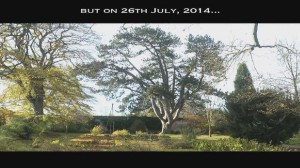 Tolkien scholar and writer John Garth writes to tell us of a video documenting the sad end of a giant Black Pine (Pinus nigra) at the University of Oxford Botanic Gardens that J.R.R. Tolkien was known to have loved. Continue reading “A giant falls: Tolkien’s tree”
Tolkien scholar and writer John Garth writes to tell us of a video documenting the sad end of a giant Black Pine (Pinus nigra) at the University of Oxford Botanic Gardens that J.R.R. Tolkien was known to have loved. Continue reading “A giant falls: Tolkien’s tree”
Month: October 2014
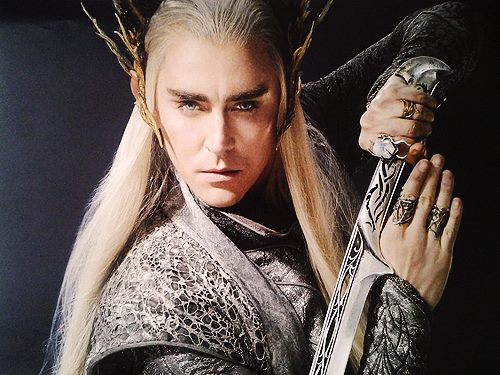 In our latest Library piece, TORn feature writer Tedoras delves deep into J.R.R. Tolkien’s Unfinished Tales of Númenor and Middle-earth to examine what we really know about Thranduil, the Sindarin lord of Mirkwood — a realm largely populated by Silvan elves. How does this make him different? What were the big influences in his political vision for his people? What, in essence, makes him tick?
In our latest Library piece, TORn feature writer Tedoras delves deep into J.R.R. Tolkien’s Unfinished Tales of Númenor and Middle-earth to examine what we really know about Thranduil, the Sindarin lord of Mirkwood — a realm largely populated by Silvan elves. How does this make him different? What were the big influences in his political vision for his people? What, in essence, makes him tick?
It’s good stuff, and inadvertently, it’s almost a companion piece to my own musings on Thranduil’s strongest character traits from earlier this year.
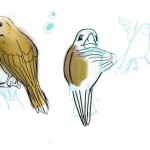 Catching up with some of our friends from New Zealand, we learned about a project that involves the efforts of a lot of Kiwis, including Sylvester McCoy of Hobbit fame and Lord of the Rings’ Alex Funke. For good measure New Zealand’s Grammy winner Kimbra (Somebody That I Used To Know) is supporting the project with her voice.
Catching up with some of our friends from New Zealand, we learned about a project that involves the efforts of a lot of Kiwis, including Sylvester McCoy of Hobbit fame and Lord of the Rings’ Alex Funke. For good measure New Zealand’s Grammy winner Kimbra (Somebody That I Used To Know) is supporting the project with her voice.
In the age of computer generated effects, the film “Birds” is a throwback. A friend to TORn, Horst Sarubin, who worked on visual effects for the three Hobbit films, is behind the project that uses puppets, shot one frame at a time with incremental movements between frames to create a motion picture. The film, about the struggles of George the bird in the primordial forests of Zealandia (pre-historic New Zealand) to carry on.
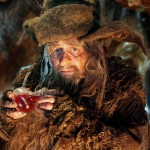 McCoy is well known for his bird whistles and humor, which Hobbit director Peter Jackson definitely brought through the former Dr. Who’s Radagast into cinematic Middle-earth. In the film’s kickstarter campaign McCoy presents those whistles and gets a little bird treat in return. In the same video Funke, who is best know for helping make the LOTR bigatures look amazing on screen, explains his role is to make the cinematography great.
McCoy is well known for his bird whistles and humor, which Hobbit director Peter Jackson definitely brought through the former Dr. Who’s Radagast into cinematic Middle-earth. In the film’s kickstarter campaign McCoy presents those whistles and gets a little bird treat in return. In the same video Funke, who is best know for helping make the LOTR bigatures look amazing on screen, explains his role is to make the cinematography great.
The stop-motion technique is being employed to give the filmmakers a hands-on experience and a final project they claim will be alive and organic. Tying closely with the passions of Peter Jackson, these are the same techniques used by Ray Harryhausen and Willis H. O’Brien. The original King Kong movie was made in this fashion, inspiring a generation of filmmakers.
With a team of grass-roots talent with a Middle-earth cinematic legacy efforting the film and a universal appealing story, but set in the ancient human-free land that would eventually become New Zealand, TORn readers may want to know further information is available at georgethebird.com. The grass-roots effort is seeking fan support via the kickstarter campaign above.
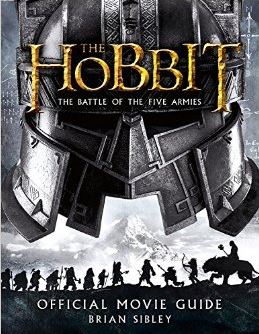 It’s been a while (or at least it feels like it) since we’ve all had a truly good spy story with some juicy details or photos that Warner Bros. hasn’t trickle-released to the public.
It’s been a while (or at least it feels like it) since we’ve all had a truly good spy story with some juicy details or photos that Warner Bros. hasn’t trickle-released to the public.
If you’ve been chafing at the bit for more, 中土红皮书 (The Red Book of Middle-earth, a Tolkien fan site from China) has just leaked 27 images from two forthcoming movie tie-in books: Jude Fisher’s The Battle of the Five Armies Visual Companion and Brian Sibley’s The Battle of the Five Armies Official Movie Guide. Be warned: there are movie spoilers as well as discussion/analysis below.
If you like what you see after the movie spoiler space, you can still pre-order your copy using the links below: neither book is due for release until November 20.
Continue reading “Check out 27 new images from The Battle of the Five Armies Visual Companion and Official Movie Guide!”
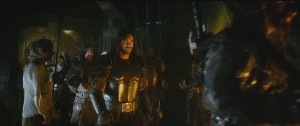 Entertainment Weekly posted this fascinating article, giving some insight into Peter Jackson’s plans for what must surely be the epic battle to end all epic battles. Just how do you stage the fight which is the title of your final movie in Middle-earth?
Entertainment Weekly posted this fascinating article, giving some insight into Peter Jackson’s plans for what must surely be the epic battle to end all epic battles. Just how do you stage the fight which is the title of your final movie in Middle-earth?
“There’s a lot of logistics that have to be thought through,” says Jackson. “We have dwarves and men and elves and orcs, all with different cultures, with different weapons, and different shields and patterns and tactics.”
The EW article contains a particularly interesting ‘map’, showing the different groups and their positioning in the battle at the gate of Erebor. Exactly what/who those five armies will be in Jackson’s movie has been a subject of speculation – and if you’re avoiding spoilers, now would be a good time to stop reading!
Tolkien wrote, ‘Upon one side were the Goblins and the Wild Wolves, and upon the other were Elves and Men and Dwarves.’ Readers have often wondered, however, why the Eagles don’t count as an army; Douglas A Anderson notes, in The Annotated Hobbit, that ‘in the 1977 Rankin/Bass animated television program of The Hobbit, the Five Armies specifically include the Eagles instead of the Wolves.’
Some TORn staffers have suggested that, having experienced battle in the First World War, when flight was still in its infancy and the idea of an air force was new, Tolkien perhaps didn’t consider battles as taking place in the air. It could, however, be a simple question of semantics: the word ‘army’ actually means ‘the military land forces of a nation’ (according to Collins English Dictionary). The Professor, being a stickler for precise meaning, perhaps dismissed as too clumsy ‘The Battle of Five Armies and Two Air Forces’ (if we include the ‘bat-cloud’) – so his ‘five armies’ would only refer to the land forces involved.
None of this necessarily means anything when it comes to Peter Jackson’s movie! He’s already strayed from Tolkien’s outline of the battle participants; the official synopsis for The Battle of the Five Armies states, ‘Sauron, the Dark Lord, has sent forth legions of Orcs in a stealth attack upon the Lonely Mountain’. In the book it is the goblins from the Misty Mountains who instigate the war, gathering forces with their kin at Gundabad, and coming down from the North led by Bolg (Azog, his father, having been slain at the Battle of Azanulbizar) – Sauron isn’t involved at all.
The map in EW’s article shows six different colour-coded groups – goblins and wargs are one colour, with eagles, elves, men and dwarves each having a different colour. This would seem to confirm what we at TORn have speculated in our panel presentations at various conventions – that Jackson’s five armies will in fact be men, dwarves, elves, orcs and eagles, with the wolves/wargs being a part of the orc army. The sixth colour on the diagram is for Beorn and Thorin – perhaps to highlight the key players of the battle (although Bard, though having his own spot on the schematic, does not share this orange colour – and it’s interesting to note that Dain, surely a key player, is not mentioned by name on this map; nor is Azog).
There’s much food for thought in this simple diagram. It appears that Bard leads men attacking from the East (from Dale, whither Lake-town refugees have fled after Smaug’s attack?). Elves come in from the West – presumably direct from Mirkwood. Beorn is coming up from the South, and the Eagles down from the North. There are also numbers on the chart – and Jackson is quoted as saying, ‘We could then start drawing the arrows on the schematics’, suggesting this is just one of several. Perhaps these numbers indicate a sequence of events? Beorn is the highest number on this image – meaning he arrives late in the battle, as in the book?
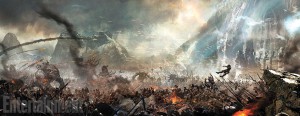 Also in the article is a wonderful piece of artwork, showing a mighty battle outside Erebor – if you click on the image (at EW’s site), it links to a bigger version. This picture seems to include cave trolls and other strange, giant creatures – and siege towers? Is this just an artist’s vision of the battle, or does it offer more insight into what we will see on the big screen?
Also in the article is a wonderful piece of artwork, showing a mighty battle outside Erebor – if you click on the image (at EW’s site), it links to a bigger version. This picture seems to include cave trolls and other strange, giant creatures – and siege towers? Is this just an artist’s vision of the battle, or does it offer more insight into what we will see on the big screen?
Questions still to be answered include: when/how does Dain arrive from the North? Will Tauriel fight with the dwarves or with her Mirkwood kin? We’ve seen, in the trailer, Legolas in Dale with Bard; will he fight alongside men? The newly released Desolation of Smaug Extended Edition contains dialogue between Thrain and Gandalf, emphasizing an alliance between Smaug and the Necromancer – is it even possible that Smaug’s death will be delayed until the start of the battle, so we see him helping the attacking orcs??
And a final question – is it December yet….?
[Read the Entertainment Weekly article here]
Back at the start of the summer, staffer GreenDragon generously asked the publisher Houghton Mifflin Harcourt to send me a copy of Tolkien’s translation of Beowulf to review. While I started the book right away, this review has been delayed by producing Happy Hobbit and attending four conventions, along with writing two books and a script on top of daily life and work, which is a long-winded way to say that I apologize for my tardiness!
While still an undergrad, I took a course in Old English which was an introduction to the language, followed by a semester of translating Beowulf. A year isn’t enough time to master a dead language, and I was attempting to master two at once, for I was also taking Latin at the time (an alternate nickname for me could be Hermione), so I won’t be able to go into the nitty gritty mechanics of the language like Tolkien does in his notes, but I will offer what insight my education allows!
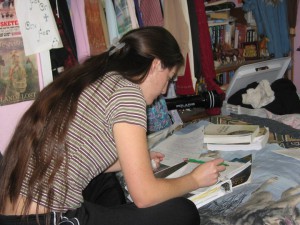
To offer some context, I will say that Old English is the name we have given to the Anglo Saxon language, for after a strong French influence after the Norman Conquest of 1066, Old English morphed into Modern English. It is important to note, as well, that Anglo Saxon is the language of our (even if you aren’t of English descent, you’re reading this in English) conquerors, for the Nordic tribes of the Angles, Saxons, and Jutes invaded England after the withdrawal of the Roman Empire around 410 CE. They renamed the island Angle-Land. England. So while Beowulf is attributed as being the first great epic in English, it is significant that it is a story from the culture that conquered the island and that its setting is in the conquering nation’s homeland in the north, not England, even though the manuscript was recorded and found in an English monastery, hidden beneath pages of religious text. All of this would have been known to J.R.R. Tolkien at the time of his translation in the 1920s.
Firstly, I will say that my reason for taking Old English was driven by my obsession with Tolkien and The Lord of the Rings. I was first exposed to Beowulf in seventh grade when I read a version of the poem for one of my classes. Enamored with the culture and the exciting, heroic tale, it lingered in my mind in a way that few stories read for school had. In the Humanities Honors Program in college, we were exposed to the literature that laid the foundations for Western civilization and I once again read a translation of Beowulf (picturing Aragorn as Beowulf this time around, of course) and while in my proceeding English courses I avoided the works I had already read, Beowulf was the one text I would read every time I was asked. As such, I have been exposed to three or four translations, including my own.


